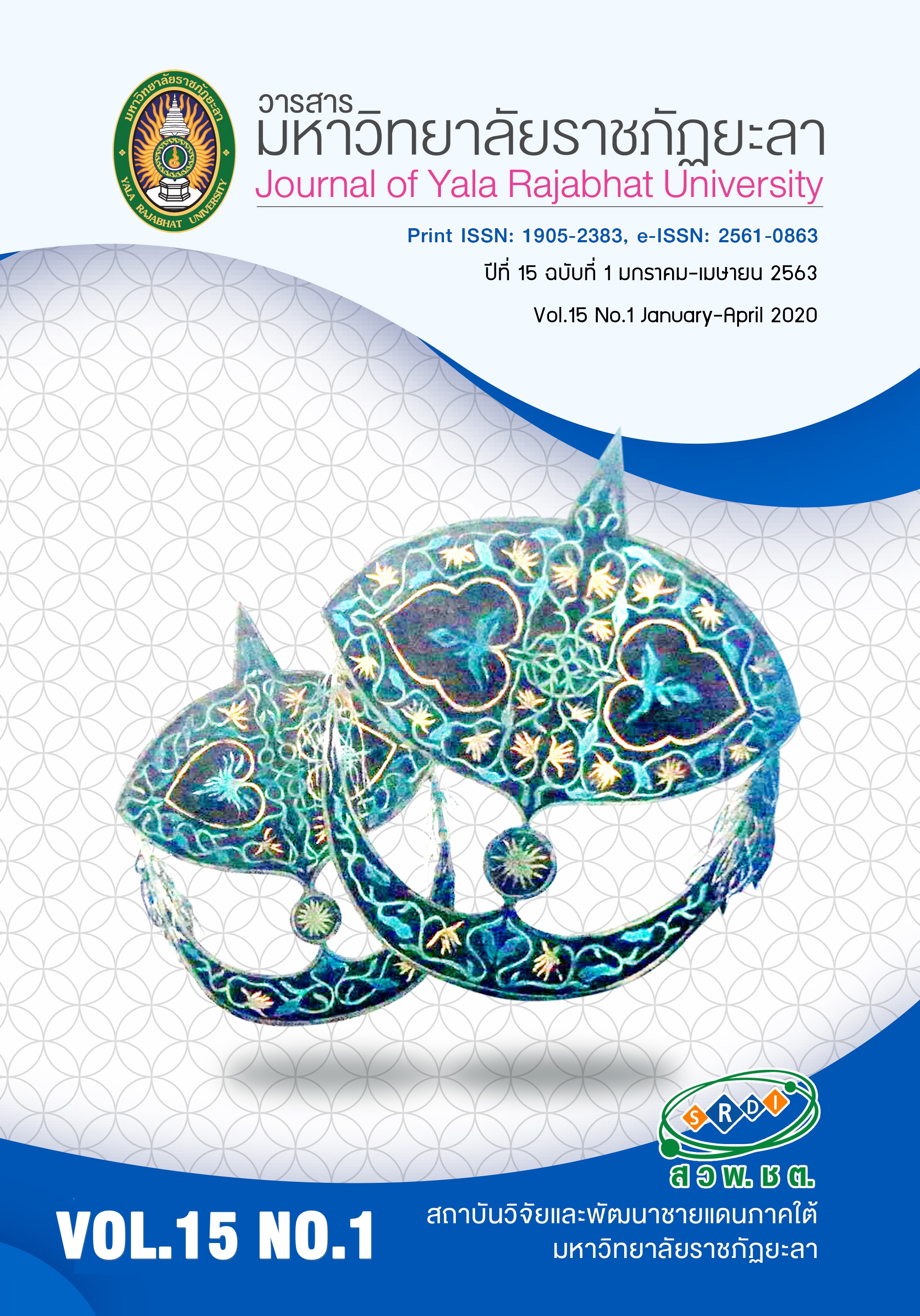ผลกระทบและการจำลองการปรับตัวเพื่อรองรับการเปลี่ยนแปลงสภาพภูมิอากาศ สำหรับการผลิตข้าวในภาคใต้ของประเทศไทย
Main Article Content
บทคัดย่อ
การศึกษานี้มีวัตถุประสงค์เพื่อวิเคราะห์ผลกระทบและจำลองการปรับตัวจากการเปลี่ยนแปลงสภาพภูมิอากาศต่อการผลิตข้าวในภาคใต้ โดยใช้ข้อมูลแบบพาเนลจาก 14 จังหวัด ระหว่างปี พ.ศ. 2532-2557 ทำการวิเคราะห์ฟังก์ชันการผลิตข้าวด้วยวิธีกำลังสองน้อยที่สุดทั่วไปแบบเป็นไปได้ ผลการศึกษาพบว่า การเพิ่มขึ้นของอุณหภูมิและปริมาณน้ำฝนส่งผลเชิงลบต่อการผลิตข้าว การเปลี่ยนแปลงสภาพภูมิอากาศในอนาคต ส่งผลให้ผลผลิตข้าวเฉลี่ยจะลดลงร้อยละ 0.70-10.70 ในระหว่างปี ค.ศ. 2030-2090 โดยที่ผลกระทบต่อความแปรปรวนของผลผลิตและโอกาสการสูญเสียผลผลิตข้าวแตกต่างไปตามแต่ละสถานการณ์การผลิต สำหรับผลการจำลองการปรับตัว พบว่าการเลื่อนระยะเวลาการเพาะปลูกและการปรับปรุงพันธุ์ข้าวที่ช่วยย่นระยะเวลาเพาะปลูก เป็นแนวทางการปรับตัวแบบเป็นมิตรต่อสิ่งแวดล้อมที่สามารถช่วยลดผลกระทบจากการเปลี่ยนแปลงสภาพภูมิอากาศในอนาคตได้
Article Details
บทความ ข้อมูล เนื้อหา รูปภาพ ฯลฯ ที่ได้รับการเผยแพร่ในวารสารมหาวิทยาลัยราชภัฏยะลานี้ ถือเป็นลิขสิทธิ์ของวารสารมหาวิทยาลัยราชภัฏยะลา หากบุคคลหรือหน่วยงานใดต้องการนำทั้งหมดหรือส่วนหนึ่งส่วนใดไปเผยแพร่ต่อหรือกระทำการใดๆ จะต้องได้รับอนุญาตเป็นลายลักษณ์อักษรจากวารสารมหาวิทยาลัยราชภัฏยะลาก่อนเท่านั้น
เอกสารอ้างอิง
2. Babel, M. S., Agarwal, A., Swain, D. K. & Herath, S. (2011). Evaluation of climate change impacts and adaptation measures for rice cultivation in Northeast Thailand. Climate Research, 46, 137–146.
3. Cabas, J., Weersink, A. & Olale, E. (2010). Crop yield response to economic, site and climatic variables. Climatic Change, 101, 559-616.
4. Chinvanno, S. (2011). The study of impact of future climate change and variation and adaptation of key economic sectors. Final report. Southeast Asia START Regional Center. Chulalongorn University. (in Thai)
5. Di Falco, S. & Chavas, J. P. (2009). On crop biodiversity, risk exposure, and food security in the highlands of ethiopia. American Journal of Agricultural Economics, 91(3), 599–611.
6. Intergovernmental Panel on Climate Change. (2014). Climate change 2014: Impacts, adaptation, and vulnerability. Summaries, frequently asked questions, and cross-chapter boxes. Geneva, Switzerland: Intergovernmental Panel on Climate Change.
7. Just, R. E. & Pope, R. D. (1979). Production function estimation and related risk considerations. American Journal of Agricultural Economics, 61, 276–284.
8. King Mongkut's University of Technology Thonburi. (2016). Regional climate modeling. King Mongkut's University of Technology Thonburi [Online]. Retrieved March12, 2016, from: http://climatechange.jgsee.org/v2/precis.php. (in Thai)
9. Kongrit, W. & Petcharat, S. (2013). Dynamics of rice economic in Southern Thailand. Final report. Thailand Research Fund. (in Thai)
10. Lasco, R. D., Habito, C. M. D., Delfi, R. J. P., Pulhin, F. B. & Concepcion, R. N. (2011). Climate change adaptation for smallholder farmers in Southeast Asia. Los Banos, Philippines: n.p.
11. Manandhar, S., Vogt, D. S., Perret, S. R. & Kazama, F. (2011). Adapting cropping systems to climate change in Nepal: A cross-regional study of farmers’ perception and practices. Regional Environmental Change, 11, 335–348.
12. Office of Agricutural Economics. (2014). Agricultural production statistic [Online]. Retrieved August10, 2014, from: http://www.oae.go.th/production.html. (in Thai)
13. Office of Agricutural Economics. (2017). Situation and trend of agricultural commodities in 2018. Office of Agricutural Economics. Bangkok: N.P. (In Thai)
14. Sinnarong, N. (2013). The potential impacts of weather on rice production and evaluation of agro-adaptation measure for Northern Thailand. The Journal of Interdisciplinary Networks, 2(2), 450-456.
15. Sukpaen, N. & Sungkharat, U. (2017). Community empowerment and management of Khlong Chamrai, Khok Muang Sub-district, Khlong Hoi Khong District, Songkhla Province. Journal of Yala Rajabhat University, 12(2), 61-75. (in Thai)
16. Thai Meteorological Department. (2014). Weather statistics. Thai Meteorological Department, Ministry of Digital Economy and Society. Bangkok [Online]. Retrieved August10, 2014, from: https://www.tmd.go.th/services/services.php. (in Thai)


